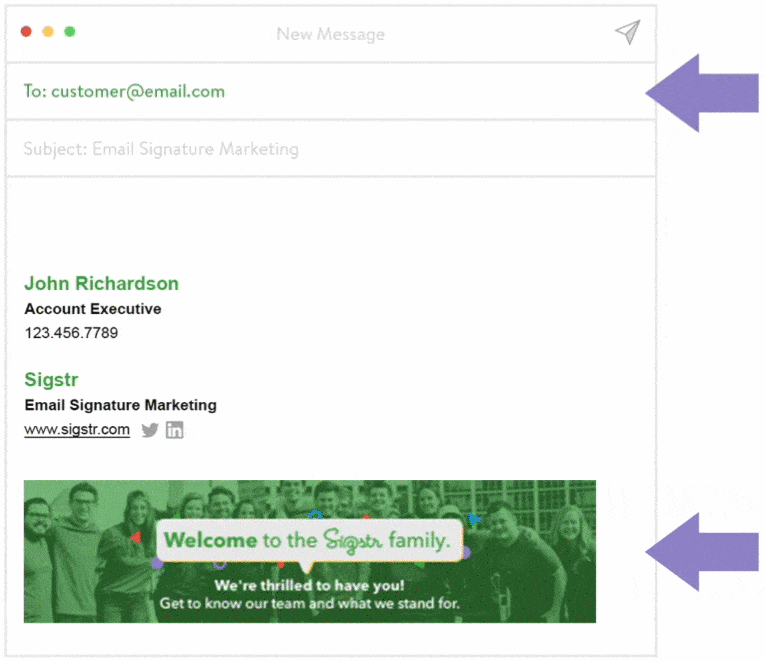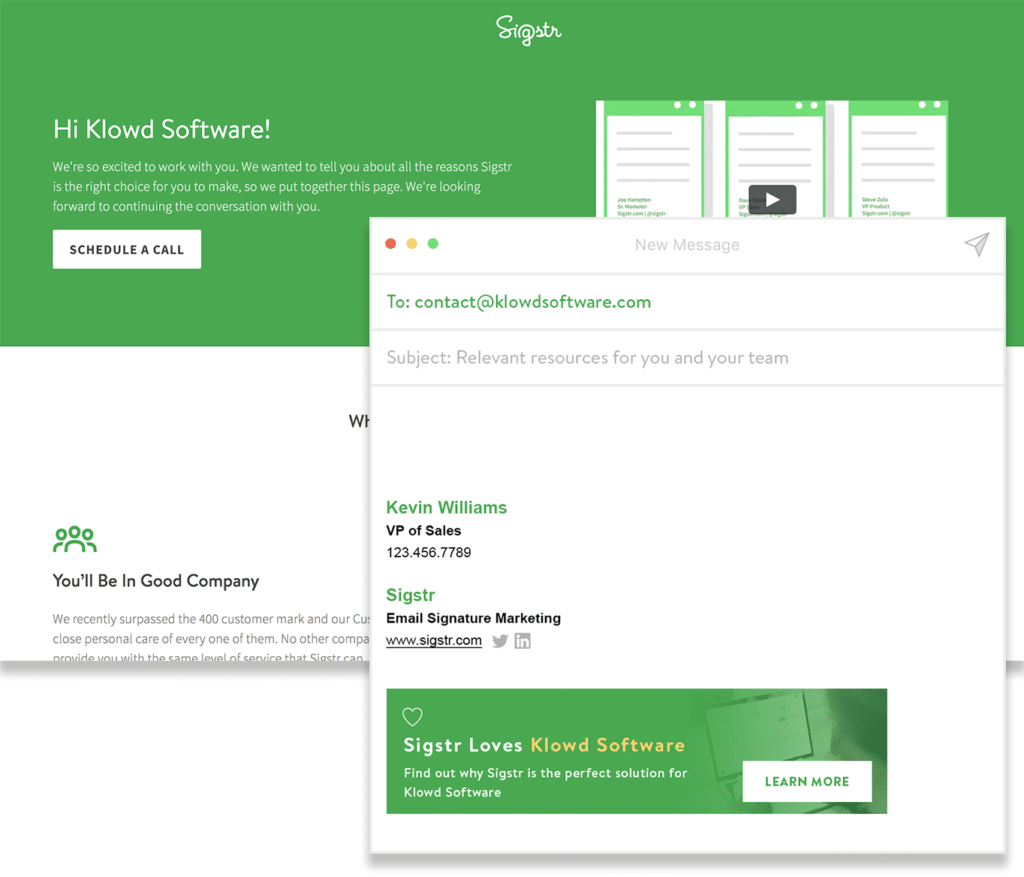As the admin of Sigstr for Sigstr, I’m often asked about our email signature marketing strategy and best practices to drive engagement. Amongst customers and prospects, I’m most commonly asked this question:
“How do you drive higher engagement and click-through-rates across Sigstr’s campaigns?”
I actually love answering this question because that’s what we’re all about here at Sigstr. We don’t just hand over the keys after implementation and say, “good luck!” We’re here as a resource for every step of the way. Need campaign design ideas? Great, we can help with that. Want to talk through a specific use case? Happy to help there as well. We pride ourselves on doing everything we can to make our customers successful.
With all that said, let’s go back to the question above. Below is a summary of how I would answer this FAQ with recommendations and best practices. Within this list is an important first bullet point which is what this post will be focused on.
- Use Sigstr’s ABM functionality with more targeted content, especially for specific accounts.
- If you can, try launching a new campaign every two weeks. If that’s a challenge for your content or design team, at least try switching around sender groups with different campaigns every one to two weeks. We launch a new campaign or switch around campaigns and sender groups everyday.
- Use Sigstr’s multi-banner campaign feature (upload 4 to 5 different variations of the same call-to-action banner) to keep your content fresh and extend the runtime of your campaign.
- Include a headline that clearly explains the promotion with a strong call-to-action that prompts them to click.
- Short and wide banners work better than tall and narrow. Eye-tracking tests prove this to be true.
- If you haven’t already, try incorporating more photography into your campaign designs. The data says it’s a good idea.
Targeted Email Signature Marketing = Better Engagement
We have always believed this to be true, but wanted to prove out this theory ourselves. So we ran the math within our own account and compared average click-through-rates between sender-based campaigns and ABM (targeted) campaigns. Before we dive into the numbers, here’s a quick refresher on what we mean by ABM campaigns.
Because Sigstr has the ability to recognize the sender and recipient of every email sent by your employees, teams can assign specific campaign banners to defined audiences. Whether it be by persona, industry, vertical, opportunity stage, or even location, teams today are using this functionality for many targeted use cases. Here are a few examples from Sigstr’s account:

The Impact:
Based on data from Sigstr’s own account across all 2017 and 2018 campaigns, we found that our ABM campaigns achieved 2x higher engagement compared to general sender-based campaigns. In this case, we define “engagement” as average click-through-rate. But wait…it gets better.
Account-Specific Targeting = Best Engagement
Amongst all of the ABM use cases you see above, the one we execute the most is account-specific targeting. This means every time we email a particular top target account, any Sigstr team member’s email signature will dynamically update to a personalized banner we have assigned for that account. For example, when we email Klowd Software, they will see this banner below. When they click, they are sent to a personalized microsite that shows how Sigstr can add value to their sales and marketing teams based on their goals and what’s most important to them.

The Impact:
After crunching the numbers on all of our 350+ account-specific campaigns, we found that the total average click-through-rate was 5x higher compared to our general sender-based campaigns.
What We Have Learned and What We’re Trying Next:
Targeted email signature marketing leads to higher engagement. And the more targeted you get, the higher your click-through-rates will trend. We proved this to be true with our own account-specific campaigns.
By now you have learned that Sigstr allows you to target personalized banners with defined industries, personas, sales stages, locations, and accounts. But did we also mention specific contacts?
Imagine what a click-through-rate could climb to when the email recipient sees an email signature banner that speaks directly to him or her? It could include their first name, favorite sports, team, or specific job title. For example, “Hey Brad! Just like the Chicago Cubs, we want to see your marketing team win in 2019.” I don’t know about you, but if I saw an email signature campaign like this, there’s no way I wouldn’t click.
Use every email sent by your team as an opportunity to stand out to the email recipient. Email signature marketing helps you do just this, and targeted ESM takes it to the next level.